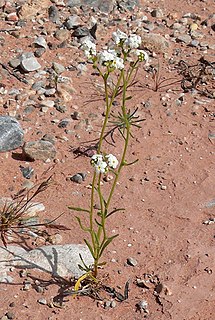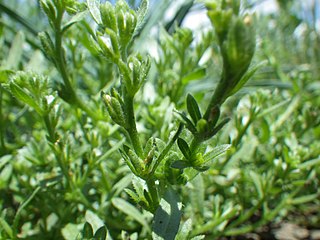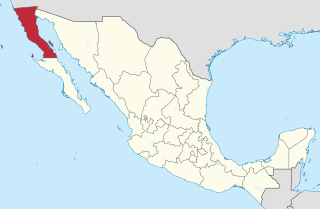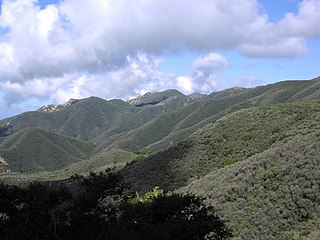Description
Plagiobothrys bracteatus is an annual herb with a mostly upright stem 10 to 40 centimeters in length. The leaves are located along the stem, the lowest, largest ones measuring up to 10 centimeters long. The plant is coated in sparse rough hairs.
The inflorescence is a series of tiny flowers, the lower ones accompanied by leaflike bracts. Each five-lobed white corolla measures 1 to 3 millimeters wide.

An inflorescence is a group or cluster of flowers arranged on a stem that is composed of a main branch or a complicated arrangement of branches. Morphologically, it is the modified part of the shoot of seed plants where flowers are formed. The modifications can involve the length and the nature of the internodes and the phyllotaxis, as well as variations in the proportions, compressions, swellings, adnations, connations and reduction of main and secondary axes. Inflorescence can also be defined as the reproductive portion of a plant that bears a cluster of flowers in a specific pattern.

In botany, a bract is a modified or specialized leaf, especially one associated with a reproductive structure such as a flower, inflorescence axis or cone scale. Bracts are often different from foliage leaves. They may be smaller, larger, or of a different color, shape, or texture. Typically, they also look different from the parts of the flower, such as the petals or sepals. The state of having bracts is referred to as bracteate or bracteolate, and conversely the state of lacking them is referred to as ebracteate and ebracteolate, without bracts.
The fruit is a narrow, cross-ribbed, tubercled nutlet no more than 2 millimeters long.

Plagiobothrys is a genus of flowering plants known commonly as popcorn flowers. These are small herbaceous plants which bear tiny white or yellow flowers. Their fruits are nutlets. Although these plants are found predominantly in North America and South America, five species are known from Australia. Of the approximately 65 species described, more than 15 are endemic to California.

Plagiobothrys acanthocarpus is a species of flowering plant in the borage family known by the common name adobe popcornflower. It is native to California and northwestern sections of Mexico, where it can be found in moist areas on clay soil, such as vernal pools. It is an annual herb with a spreading or erect stem 10 to 40 centimeters in length. The leaves are linear or lance-shaped to oblong and several centimeters in length. The plant is coated in rough hairs. The inflorescence is a series of tiny flowers, each with a yellow-throated, five-lobed white corolla less than 3 millimeters wide. The nutlets are covered in long prickles with some bristles between.

Plagiobothrys arizonicus is a species of flowering plant in the borage family known by the common name Arizona popcornflower.
Plagiobothrys austiniae is a species of flowering plant in the borage family known by the common name Austin's popcornflower. It is native to California, where it can be found in the Central Valley and Sierra Nevada foothills. It is also known from southern Oregon.

Plagiobothrys canescens is a species of flowering plant in the borage family known by the common name valley popcornflower. It is endemic to California, where it is a common wildflower in valley, foothill, desert, coastline, and canyon habitat in the central and southern regions of the state.
Plagiobothrys chorisianus is a species of flowering plant in the borage family known by the common name artist's popcornflower. It is endemic to California, where it can be found in and around the San Francisco Bay Area and parts of the coastline to the south.

Plagiobothrys collinus is a species of flowering plant in the borage family known by the common name Cooper's popcornflower.
Plagiobothrys distantiflorus is a species of flowering plant in the borage family known by the common name California popcornflower. It is endemic to California, where it is known only from the northern and central Sierra Nevada foothills.
Plagiobothrys glyptocarpus is a species of flowering plant in the borage family known by the common name sculptured popcornflower. It is native to Oregon and northern California, where it grows in moist woodland and grassland habitat. It is an annual herb growing mostly erect to a maximum height near half a meter. The leaves along the stem are 4 to 8 centimeters long and the herbage is coated in rough hairs. The inflorescence is a series of small white flowers with rounded five-lobed corollas 2 to 9 millimeters wide. The fruit is a nutlet about 2 millimeters wide with a rough, tubercled or ribbed surface visible on magnification.
Plagiobothrys greenei is a species of flowering plant in the borage family known by the common name Greene's popcornflower. It is native to Oregon and northern California, where it grows in moist woodland and grassland habitat. It is an annual herb with a spreading or erect stem growing 10 to 40 centimeters long. The leaves along the stem are 1 to 5 centimeters long and the herbage is coated in rough hairs. The inflorescence is a series of tiny flowers with white five-lobed corollas no more than 3 millimeters wide. The fruit is a minute nutlet with a surface covered in long prickles.
Plagiobothrys humistratus is a species of flowering plant in the borage family known by the common names dwarf popcornflower or low popcornflower. It is endemic to the Central Valley of California, where it grows in grassland habitats, including vernal pools and other wetland areas.

Plagiobothrys jonesii is a species of flowering plant in the borage family known by the common name Mojave popcornflower. It is native to the southwestern United States and northern Mexico, where it grows in desert mountains and flats in scrub and woodland habitat.

Plagiobothrys leptocladus is a species of flowering plant in the borage family known by the common names finebranched popcornflower and alkali plagiobothrys. It is native to western North America from Alaska to the Dakotas to northern Mexico, where it can be found in varied types of wet habitat, including inundated alkali flats and vernal pools.
Plagiobothrys parishii, known by the common name Parish's popcornflower, is an uncommon species of flowering plant in the borage family.
Plagiobothrys shastensis is an uncommon species of flowering plant in the borage family known by the common name Shasta popcornflower. It is native to southern Oregon and northern California, where it grows in grassland, woodland, and other types of habitat. It is an annual herb growing erect to about 30 centimeters in maximum height. It is coated in hairs. The leaves are located in a basal rosette with a few arranged alternately along the stem. The inflorescence is a straight branch holding paired flowers, rarely coiling at the tip as many other Plagiobothrys do. Each tiny white flower has a five-lobed corolla no more than 3 millimeters wide. The fruit is a cross-shaped nutlet 2 or 3 millimeters wide divided in half by a rough scar.
Plagiobothrys stipitatus is a species of flowering plant in the borage family known by the common name stalked popcornflower and stipitate forget-me-not. It is native to Oregon and most of California, where it grows in vernal pools and similar wet habitat types. It is an annual herb producing a narrow, hollow, erect stem up to half a meter tall. It is coated in rough hairs. The pointed, hairy leaves along the stem are up to 11 centimeters long. The inflorescence is a series of five-lobed white flowers 2 millimeters to over one centimeter wide. The fruit is a narrow, ribbed nutlet.
Plagiobothrys strictus is a rare species of flowering plant in the borage family known by the common name Calistoga popcornflower. It is endemic to Napa County, California, where it is known from only two small locations near Calistoga.
Plagiobothrys tenellus is a species of flowering plant in the borage family known by the common names Pacific popcornflower and slender popcornflower. It is native to western North America from British Columbia to Mexico, where it is a common member of the flora in several types of habitat.
Plagiobothrys uncinatus is a species of flowering plant in the borage family known by the common names Salinas Valley popcornflower and hooked popcornflower. It is endemic to the Central Coast Ranges of California, where it is known mainly from the Santa Lucia Mountains and Gabilan Range in Monterey County.
Streptanthus bracteatus is a species of flowering plant in the mustard family known by the common names bracted jewelflower and bracted twistflower. It is endemic to Texas in the United States.













